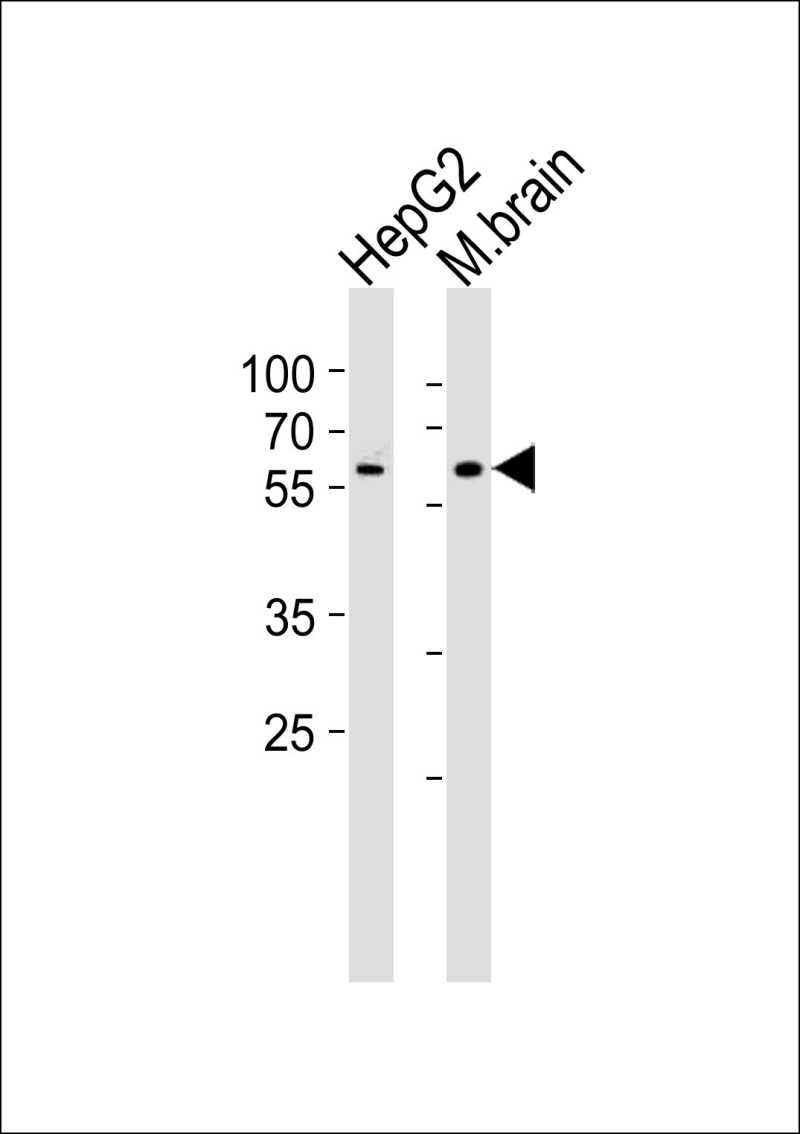
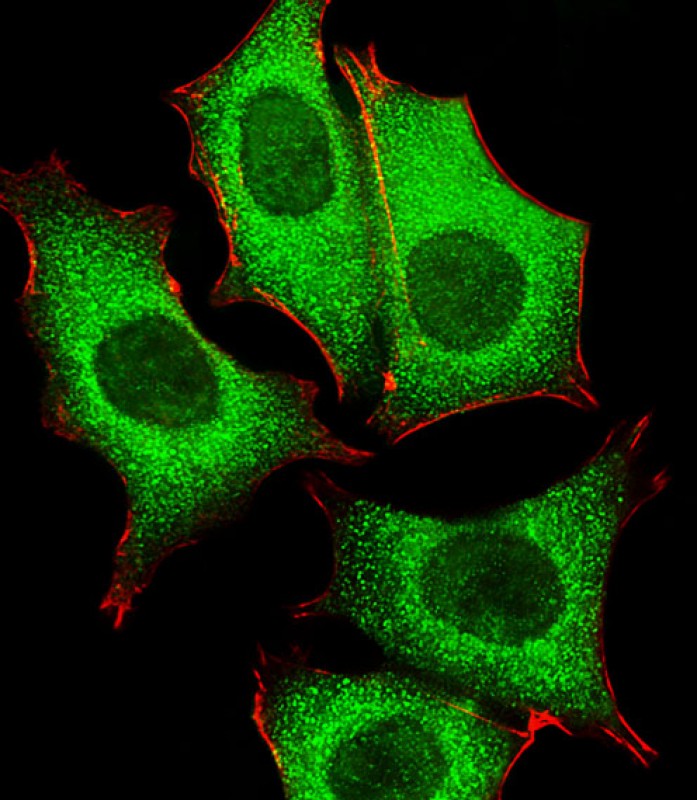
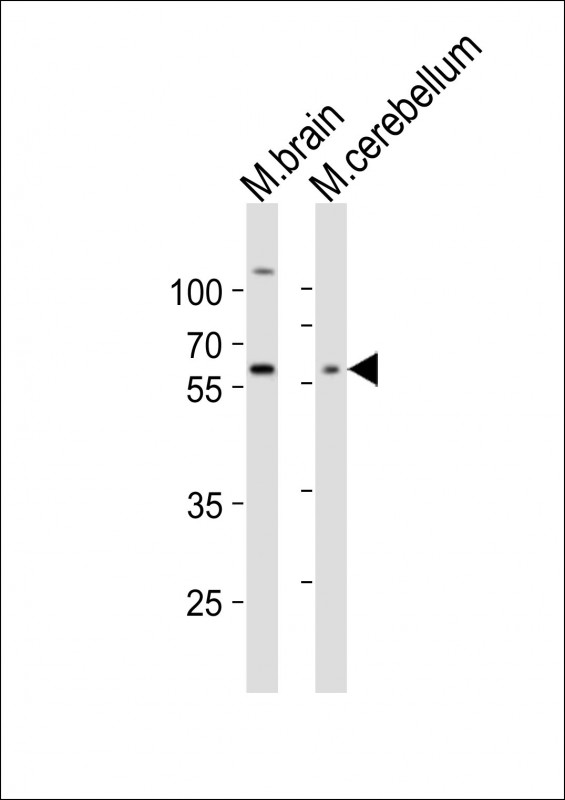
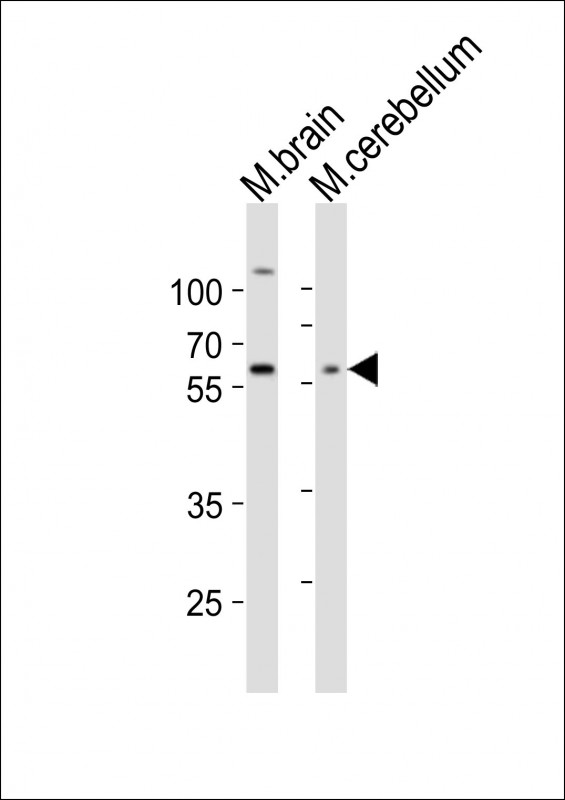
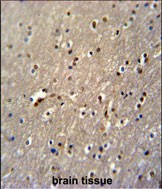
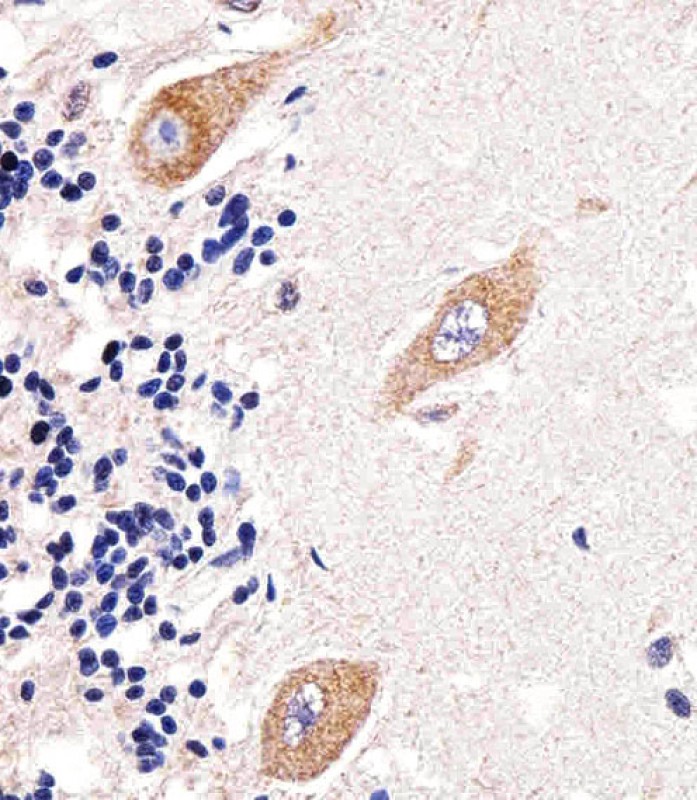
| WB | 1/1000 | Human,Mouse,Rat |
| IF | 咨询技术 | Human,Mouse,Rat |
| IHC | 1/100-1/500 | Human,Mouse,Rat |
| ICC | 1/25 | Human,Mouse,Rat |
| FCM | 咨询技术 | Human,Mouse,Rat |
| Elisa | 咨询技术 | Human,Mouse,Rat |
| Aliases | Poly(A) RNA polymerase GLD2, hGLD-2, PAP-associated domain-containing protein 4, Terminal uridylyltransferase 2, TUTase 2, PAPD4, GLD2 |
| Entrez GeneID | 167153 |
| WB Predicted band size | 56.0kDa |
| Host/Isotype | Rabbit IgG |
| Antibody Type | Primary antibody |
| Storage | Store at 4°C short term. Aliquot and store at -20°C long term. Avoid freeze/thaw cycles. |
| Species Reactivity | Human, Mouse |
| Immunogen | This GLD2 antibody is generated from rabbits immunized with a KLH conjugated synthetic peptide between 58-87 amino acids from the N-terminal region of human GLD2. |
| Formulation | Purified antibody in PBS with 0.05% sodium azide. |
+ +
以下是关于GLD2 (N-term)抗体的3篇参考文献及其摘要内容:
---
1. **文献名称**: *GLD-2. a Conserved Poly(A) Polymerase, Promotes Germline mRNA Translation in Caenorhabditis elegans*
**作者**: Rouhana, L., et al. (2008)
**摘要**: 该研究利用GLD2 (N-term)抗体在模式生物线虫中验证GLD-2蛋白的表达。研究发现,GLD-2通过延长靶mRNA的poly(A)尾增强其翻译活性,对生殖细胞发育至关重要。抗体特异性经Western blot和免疫荧光确认。
---
2. **文献名称**: *Drosophila GLD2 is required for activating the meiotic checkpoint in female germline*
**作者**: Nakel, K., et al. (2012)
**摘要**: 研究通过GLD2 (N-term)抗体检测果蝇卵巢中GLD2的亚细胞定位。结果显示,GLD2在卵母细胞减数分裂检查点激活中发挥关键作用,其缺失导致染色体分离异常。抗体特异性通过RNAi敲降实验验证。
---
3. **文献名称**: *GLD2 poly(A) polymerase contributes to tissue-specific mRNA translation in mammals*
**作者**: Iwasaki, S., et al. (2015)
**摘要**: 该研究使用GLD2 (N-term)抗体分析小鼠多种组织中的GLD2表达,发现其在睾丸和神经元中高表达。功能实验表明,GLD2通过调控特定mRNA的poly(A)尾长度影响翻译效率,参与精子发生和突触可塑性。
---
**备注**:以上文献为示例,实际引用需根据具体研究内容核对。若需获取全文,建议通过PubMed或期刊数据库检索关键词(如“GLD2 antibody”或“PAPD4 N-terminal”)。
The GLD2 (N-term) antibody is a valuable tool for studying the GLD-2 (Germ Line Development-2) protein, also known as PAPD4 or TUT2. which belongs to the non-canonical poly(A) polymerase family. GLD-2 plays a critical role in post-transcriptional gene regulation by extending the poly(A) tails of specific mRNAs, enhancing their stability, translation, and cytoplasmic polyadenylation. This activity is essential in germline development, neuronal synaptic plasticity, and stem cell maintenance. The antibody specifically targets the N-terminal region of GLD-2. enabling researchers to investigate its expression, localization, and interactions in various biological contexts.
GLD-2 functions as a cytoplasmic RNA-binding protein, often partnering with RNA-binding proteins like CPEB (Cytoplasmic Polyadenylation Element Binding protein) to regulate mRNA metabolism. Its involvement in cell reprogramming, oocyte maturation, and neuronal signaling underscores its importance in developmental and cellular processes. The GLD2 (N-term) antibody is widely used in techniques such as Western blotting, immunoprecipitation, and immunofluorescence to explore these mechanisms. Its specificity for the N-terminal domain allows differentiation from other poly(A) polymerases, aiding in studies of tissue-specific expression patterns and functional redundancy. Research utilizing this antibody has advanced understanding of mRNA dynamics in gametogenesis, neurobiology, and cancer, where dysregulated polyadenylation contributes to disease progression.
×